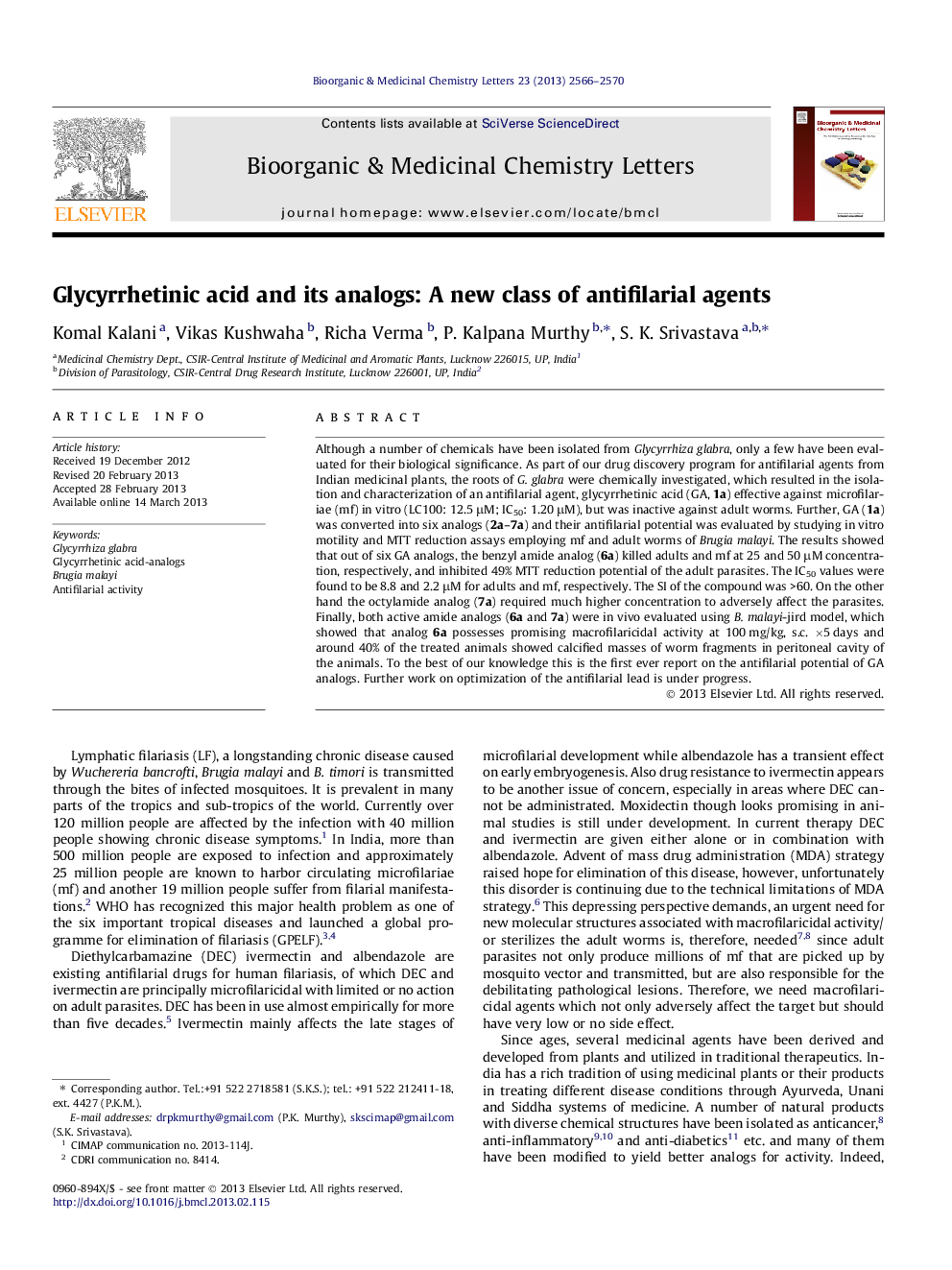| Article ID | Journal | Published Year | Pages | File Type |
|---|---|---|---|---|
| 10591910 | Bioorganic & Medicinal Chemistry Letters | 2013 | 5 Pages |
Abstract
Although a number of chemicals have been isolated from Glycyrrhiza glabra, only a few have been evaluated for their biological significance. As part of our drug discovery program for antifilarial agents from Indian medicinal plants, the roots of G. glabra were chemically investigated, which resulted in the isolation and characterization of an antifilarial agent, glycyrrhetinic acid (GA, 1a) effective against microfilariae (mf) in vitro (LC100: 12.5 μM; IC50: 1.20 μM), but was inactive against adult worms. Further, GA (1a) was converted into six analogs (2a-7a) and their antifilarial potential was evaluated by studying in vitro motility and MTT reduction assays employing mf and adult worms of Brugia malayi. The results showed that out of six GA analogs, the benzyl amide analog (6a) killed adults and mf at 25 and 50 μM concentration, respectively, and inhibited 49% MTT reduction potential of the adult parasites. The IC50 values were found to be 8.8 and 2.2 μM for adults and mf, respectively. The SI of the compound was >60. On the other hand the octylamide analog (7a) required much higher concentration to adversely affect the parasites. Finally, both active amide analogs (6a and 7a) were in vivo evaluated using B. malayi-jird model, which showed that analog 6a possesses promising macrofilaricidal activity at 100 mg/kg, s.c. Ã5 days and around 40% of the treated animals showed calcified masses of worm fragments in peritoneal cavity of the animals. To the best of our knowledge this is the first ever report on the antifilarial potential of GA analogs. Further work on optimization of the antifilarial lead is under progress.
Related Topics
Physical Sciences and Engineering
Chemistry
Organic Chemistry
Authors
Komal Kalani, Vikas Kushwaha, Richa Verma, P. Kalpana Murthy, S.K. Srivastava,
